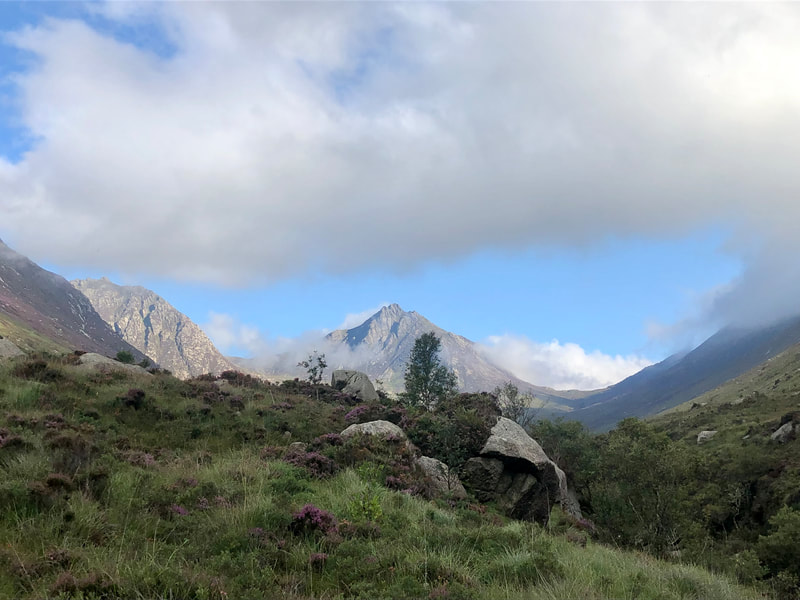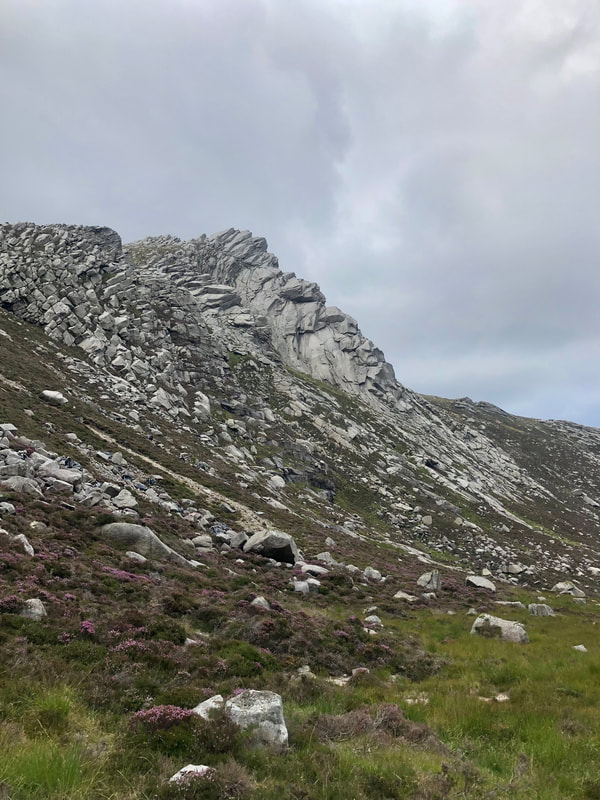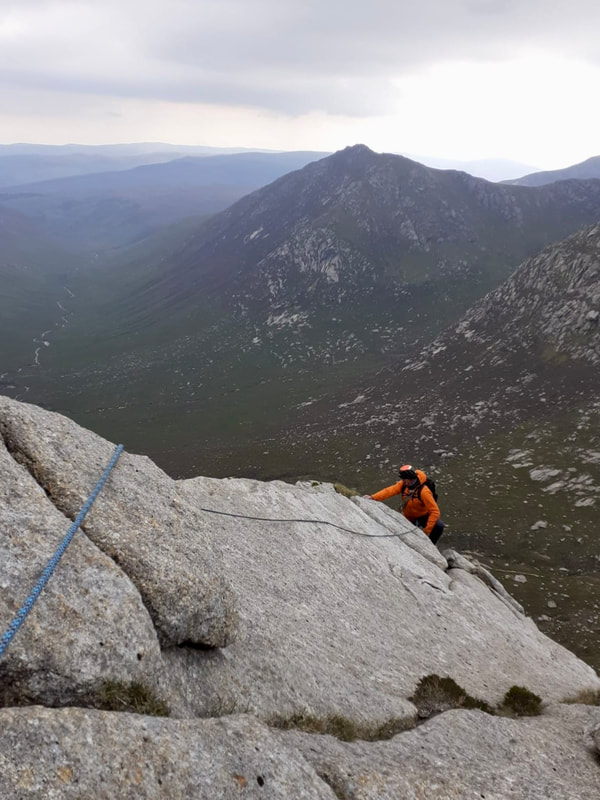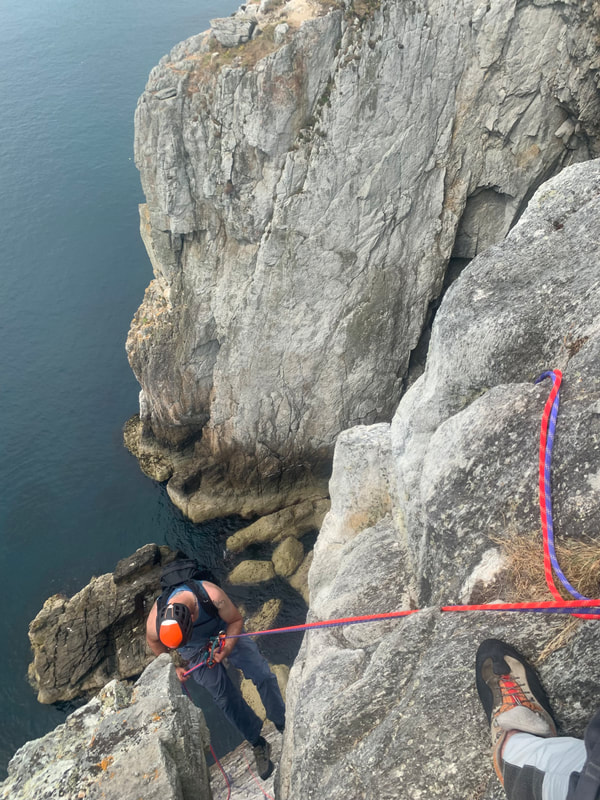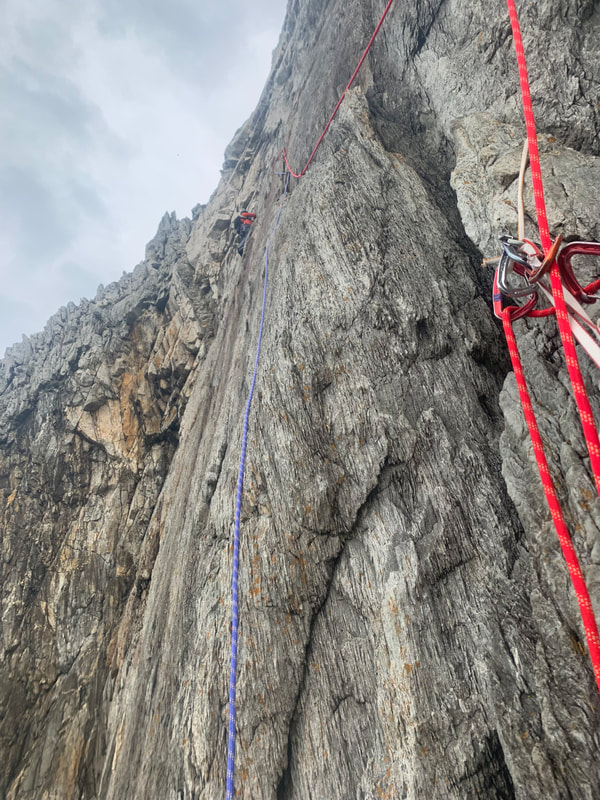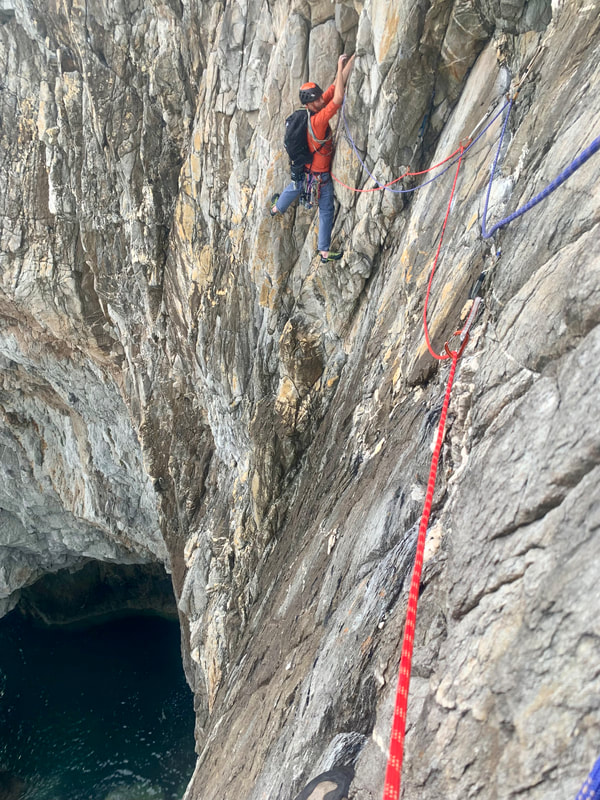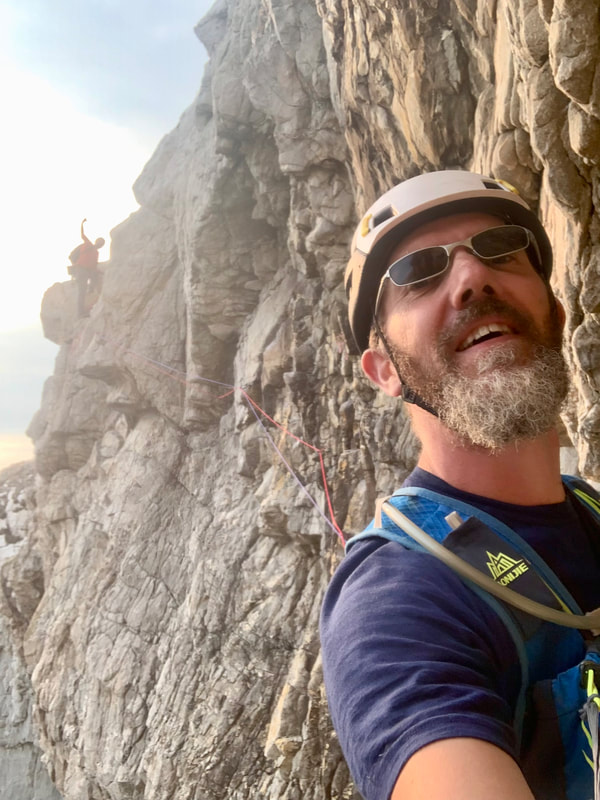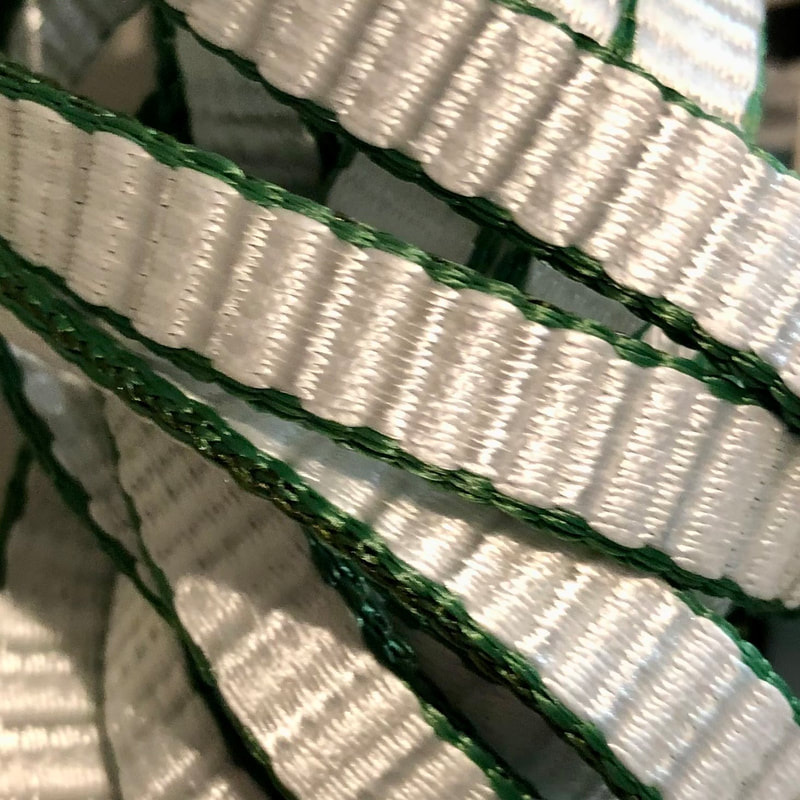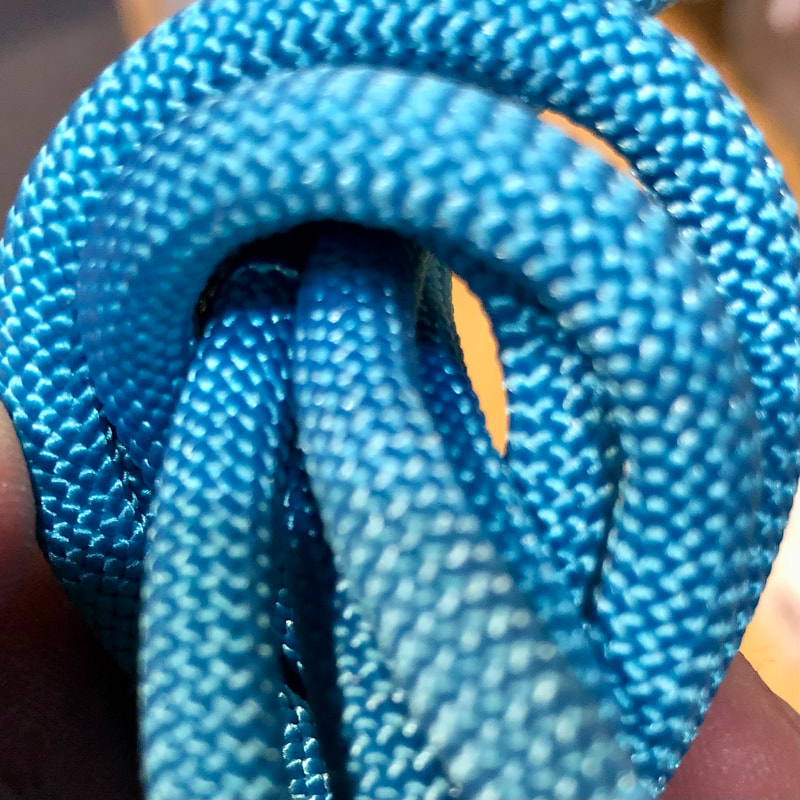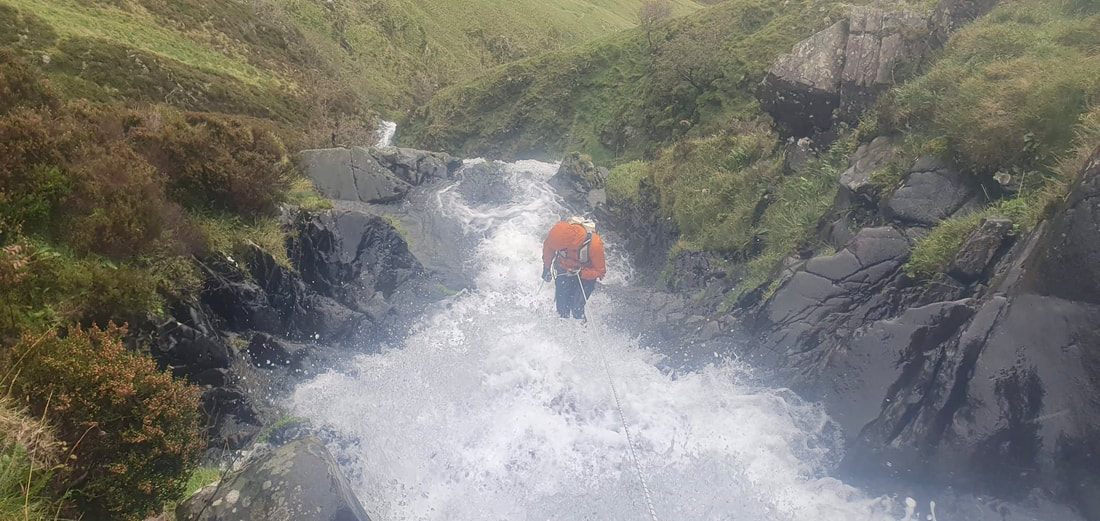EA MOUNTAIN SKILLS
Menu
1. granite is 'god's own rock'Amazing friction & a wealth of truly outstanding climbs across northern England mean this title has been owned by gritstone for long time. Having climbed a lot on the outcrops of Derbyshire I've always found it hard to disagree. Until now. After a trip to Arran for 'lifetime tick' South Ridge Direct VS 5a*** described as 'one of the finest climbs in the country' (UKC) I'm convinced granite is the best medium I've climbed on. It has all the same features as grit; rounded holds, slabs, corners, overhangs, jamming. But with the added peace of mind that comes with placing gear in tough igneous rock & even better friction from the sharp crystals formed as the lava cooled under the surface. Definitely going back in 2024 for more. 2. Dream of WHITE horses doesn't deserve its reputation (for the exposure ALONE)The other 'lifetime tick' of 2023. A coveted route, a milestone, 'one of the best in the world' (UKC) Dream of White Horses HVS 4c***. The climbing is sustained at 4c & gear is frequent; normally I'd be comfortable even with the waves crashing far below. This time the fear grabbed me until after the crux climb-down on the final pitch. The difference in my demeanour was so visible Steve started laughing & taking photos. Why'd the worry get me? It started as I pulled a handhold off the initial pitch. The rock is loose, scarred where other holds have been lost & some of the gear placements sound unconvincingly hollow. I hadn't heard anyone comment on it & it took me by surprise. It's also the kind of crag I'd try to avoid taking all but very competent clients on as an MCI. Seems I'd spent too much time climbing on bombproof placements. Cue some careful, considered climbing, frequent placements & hanging belays off as much gear as I could find. Rain as I was leading the rising flake on the third pitch didn't help but having an experienced big wall climber for a partner definitely did (nice one Steve). The route deserves its intimidating reputation for the rock quality; not for the sustained climbing or the exposure. Another reason why all that 4c climbing gets HVS & not VS. Nonetheless go do it - its phenomenal. 3. sometimes no warm up is betterI moved on to E1s in 2022 with The First Touch E1 5b** at Black Crag & decided 2023 would be the season for E2. After a 20 minute walk-in from the Wrynose Pass & a catch up with Chris I found myself at Black Crag again. This time I was standing underneath the slab of Glass Slipper E2 5b***. I'd led it successfully with a side-runner at HVS some years ago & leading it without the side runners at E2 felt like a sensible first of a grade (while I was sitting at home). The route is bold with an undoubted ground fall if you slip on the crux. But I'd done the moves prior & bold slab climbing is my style. Chris asked me what route we should warm up on. 'I think if I think about this too much...' I replied to Chris as I considered the moves. 'Then I'll decide it's a terrible idea. I should pull on now.' First E2 ✅ 4. Dyneema Slings are a waste of moneyEvery trad rack needs slings. My work rack for multipitch climbing has a couple of 30cm slings to use as extendable quickdraws, a trio of 120cm slings for threads, equalising gear & abseil lanyards, then a pair of 240cm slings for looping big blocks. Dyneema is a wonder material; ultra-lightweight & strong enough that slings can be made so thin as to be unobtrusive on gear loops. Up until I started working as an MCI & my rack started seeing use 2-3 times a week my slings were dyneema. Plenty of climbers & professionals swear by them. But not me, not any more. The construction of dyneema slings makes them vulnerable to abrasion. Soon as the textile moves over an edge or coarse rock it gets damaged. All that furring on the sling comes from threads breaking in the textile, broken threads mean the sling is weaker, so if you're using them in a professional context abrasion necessitates slings being retired fairly quickly. It's wasteful for your bank account & as dyneema comes from plastic I want to minimise how much I'm throwing away. Fortunately Edelrid have a solution; aramid slings with a kernmantle construction made up to 120cm & tech webbing with a dyneema core & nylon sheath made up to 240cm. Both of these have an outer around the 'core' of the sling making them abrasion-resistant. My dyneema slings would normally approach retirement in 2-3 seasons but there's barely a scratch on my Edelrid slings. I'm a convert 👍 5. Bolting can be acceptableIt's probably worth saying for the sake of personal safety I don't want to see established trad routes bolted for an ascent. I also don't want to see bolted routes put up on 'trad' crags if there's the option of protecting that climb with gear.
But there are valleys in the UK where the 'no bolts on these crags' policy seems to have been applied indiscriminately to other parts of the valley which aren't used by climbers. I have to question why? If the national parks are there for all to enjoy maybe it's selfish to insist an entire valley needs to be treated in line with the ethics of just one sport. Canyoning involves the descent of a mountain stream via any means; scrambling, sliding, jumping & abseiling. In the latter case its an acceptable ethic to bolt an abseil station for the purposes of descending a wet, moss-covered cascade the likes of which most sane British climbers wouldn't touch. More & more canyons are being bolted in the UK so conflict is perhaps inevitable. Or perhaps it's an opportunity for climbers to question the value of some of our traditions as Mountaineering Scotland are doing on the Old Man of Hoy.
0 Comments
Your comment will be posted after it is approved.
Leave a Reply. |
